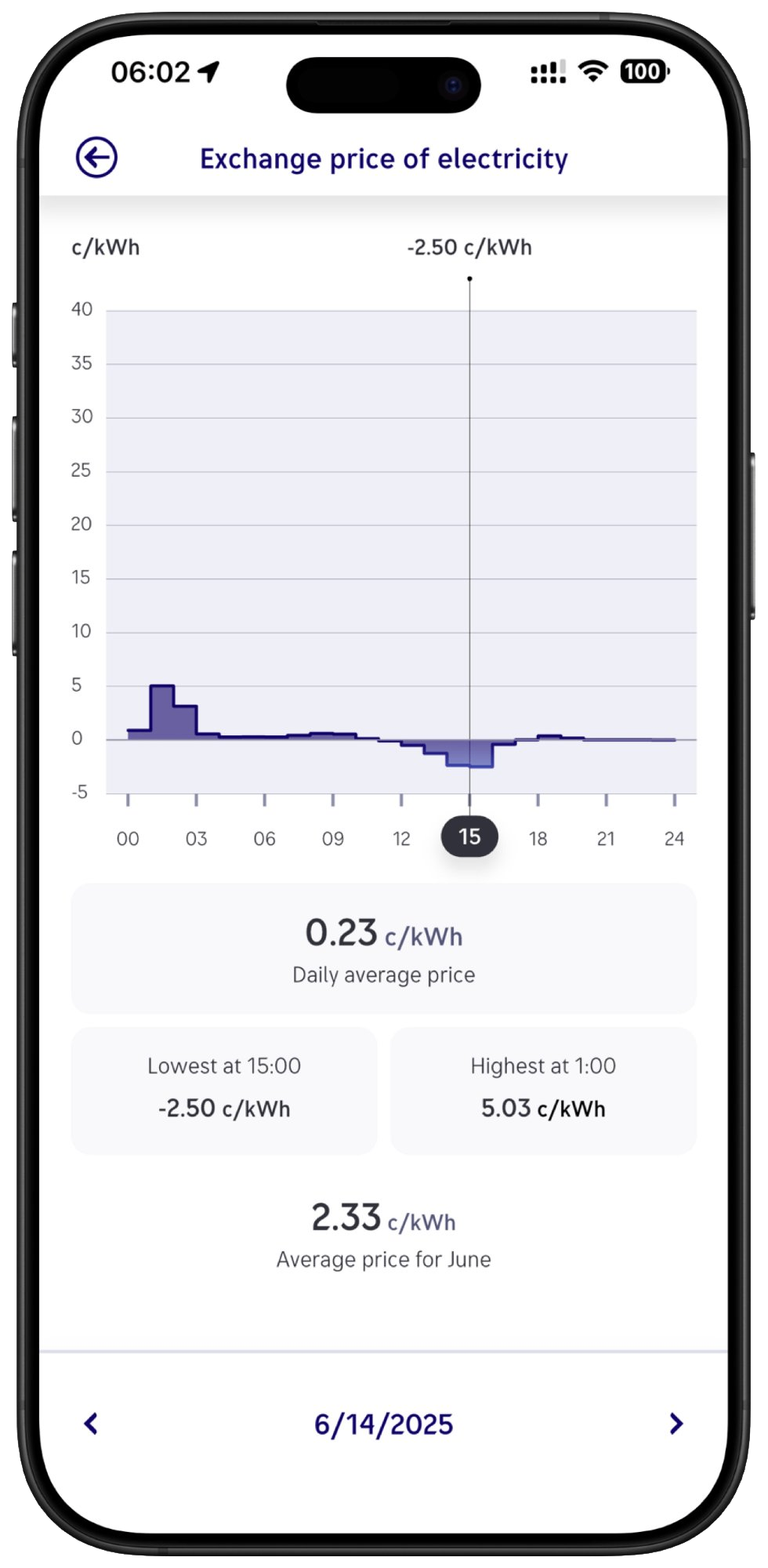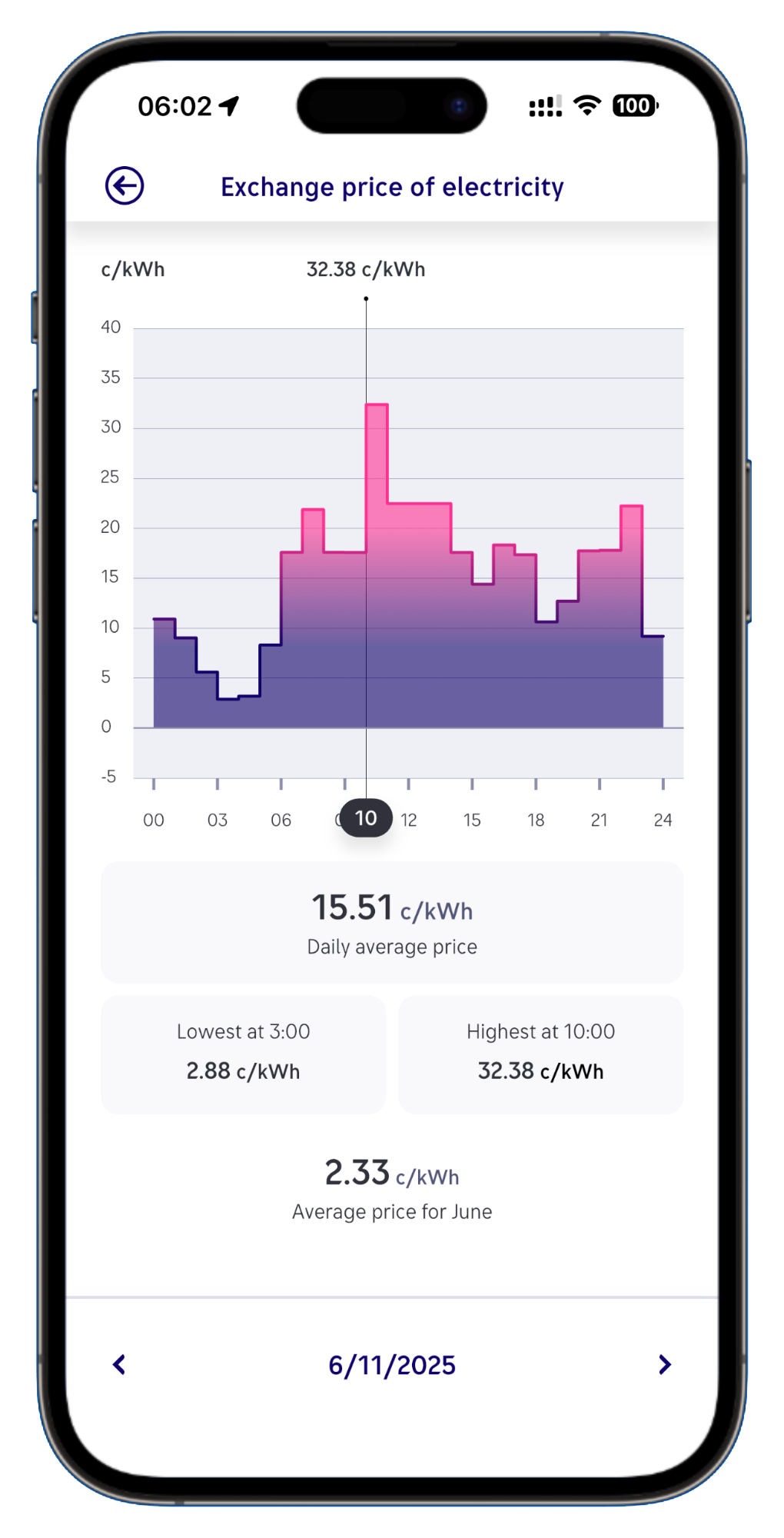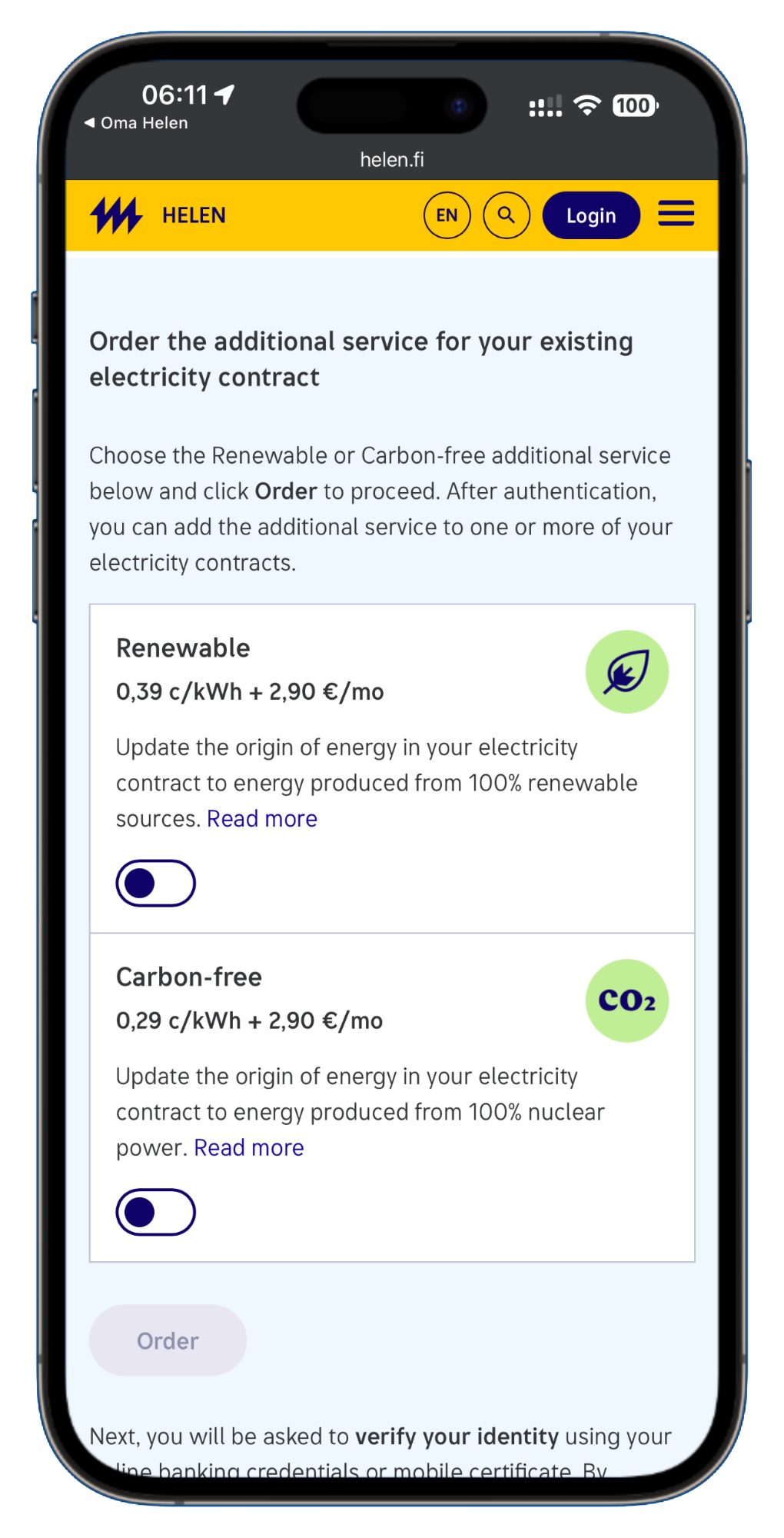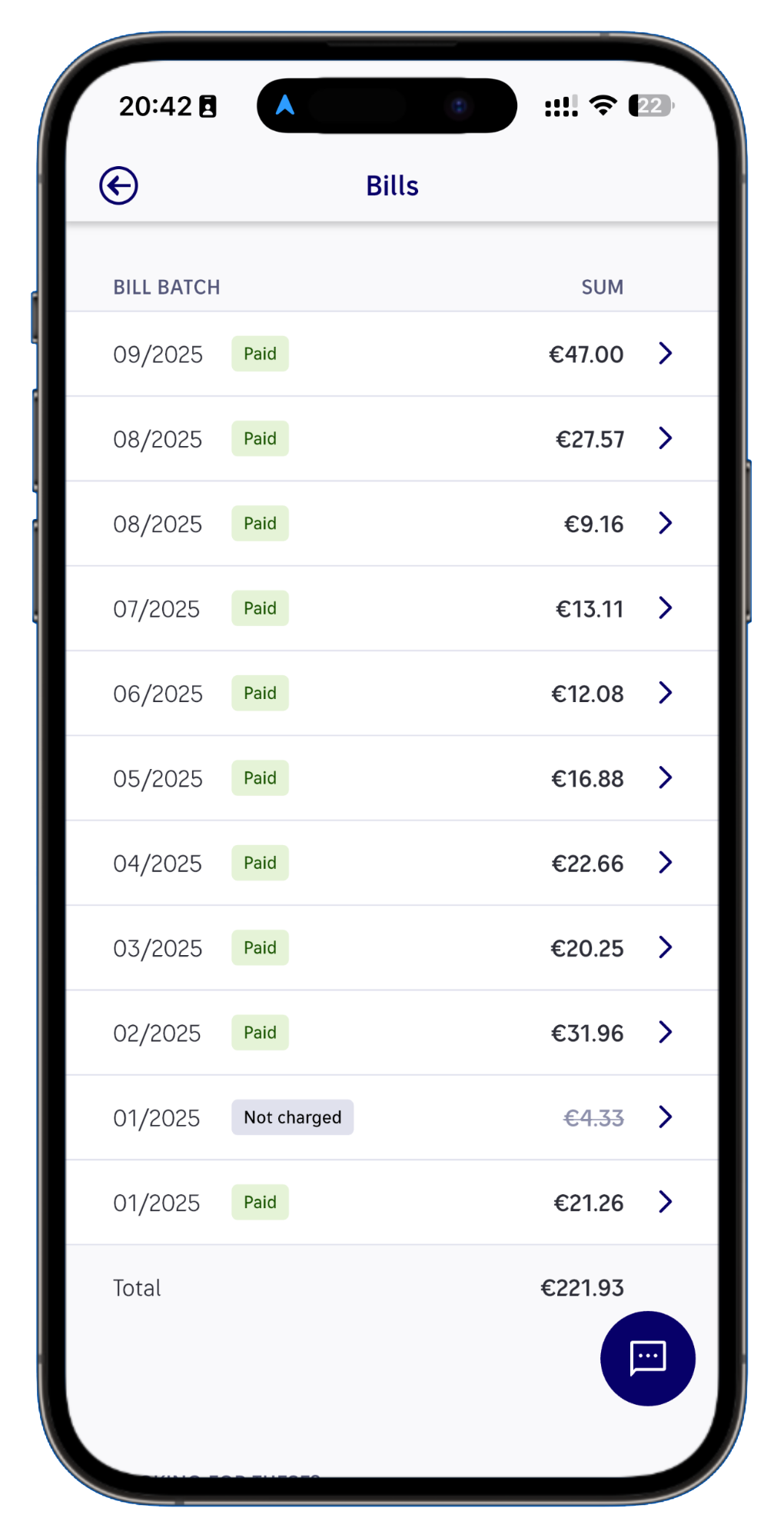One morning in Finland, I opened my electricity company's app and was stunned to see that the price at 3 PM was negative. This shocking revelation transformed my understanding of electricity consumption and its connection to energy sources.
When I lived in China, I never thought about "what time is cheaper for electricity." The electricity bill was always stable: the meter recorded how many kilowatt-hours were used, and I paid a fixed amount at the end of the month. Even though I had heard of peak and off-peak electricity prices, the difference was not significant enough to affect my daily habits.
Here, electricity prices are quoted by the hour
After moving to Finland, one morning I woke up and casually opened the electricity company's app. I was stunned to see the electricity price curve for the day—at 3 PM, the price was actually negative. At that moment, I couldn't help but laugh, thinking I must have misread it.

The electricity price at 3 PM is -2.50 c/mWh, about -0.2 RMB per kWh
I gradually got used to it; electricity prices in Finland fluctuate like the stock market. If you have a spot price contract, the electricity price is settled hourly. I remember one time at 3 AM, I checked the price, and it was 2.88 c/kWh; not long after, by 10 AM, it jumped to 32.38 c/kWh. In just seven hours, the price difference exceeded 11 times.

The electricity price difference between 3 AM and 10 AM is 11 times
In China, it hardly matters when you run the washing machine; but here, if you happen to hit the most expensive time period, the electricity cost for the same load of laundry can be several times higher. It feels like accidentally stumbling into the "peak stock market" of electricity.
Back to the negative electricity prices. It sounds like free electricity, but that's not quite the case. When electricity prices drop to negative, it usually means that wind and hydro power generation is too high while demand is low, so the market essentially "pays" users to consume it. It sounds amazing, but the bill doesn't actually turn negative.
Because electricity costs in Finland are actually composed of several parts:
-
Energy charge: Electricity price × Consumption (this can be negative);
-
Transmission charge: Paid to the local grid company, always collected;
-
Fixed monthly fee: Each energy company and grid company may charge a fee;
So even with negative electricity prices, in the end, you just "pay a little less," rather than "the electricity company pays you." When I first discovered this, I felt quite disappointed.
Out of curiosity, I also checked the highest electricity prices in Helsinki: the historically highest electricity prices in Helsinki mainly occurred during the energy crisis in 2022 and a few extreme events. During this period, some households in Helsinki had contract prices that peaked at nearly €0.49 per kWh (about 3.8 RMB/kWh), setting a record for extreme residential contract prices.
Indeed, the same kilowatt-hour of electricity may be nearly free today and as expensive as gold tomorrow.
People also care about the "origin" of electricity
What surprised me even more is that electricity here is categorized by "origin." The electricity company will tell you how much of the electricity you use comes from fossil fuels, how much from nuclear energy, and how much from renewable sources. Interestingly, if you care about environmental protection, you can pay a little extra to upgrade your contract to 100% renewable or 100% carbon-free (nuclear power).
My own app shows:
-
Upgrade to renewable energy: +0.39 c/kWh + €2.90/month
-
Upgrade to carbon-free energy: +0.29 c/kWh + €2.90/month

You can pay to upgrade to different types of energy
When paying for electricity in China, no one ever asked me, "Would you like to choose wind power or nuclear power?" But here, it has become an additional choice.
I specifically checked the source of our household's electricity. Since we chose the default package, the vast majority comes from fossil fuels and peat:
- 56% from fossil fuels and peat
- 31% from nuclear energy
- 13% from renewable energy

Our household is on the default package, and the source ratio can also be checked
Unpredictable electricity bills
Since the prices are so "unstable," everyone must be curious about our specific expenses. I looked through our household bills. From January to September 2025, the total was €221.99, averaging €24.7 per month (about 200 RMB). In January, it was €21.26, in February €31.96, and during the summer, the prices were the lowest, with June and July at only €12.08 and €13.11, and in August, there was even a bill for just €9.16. However, after autumn began, prices rose significantly, jumping to €47.00 in September. Overall, summer bills were the lowest, while winter and autumn were higher, which relates to both consumption and electricity price trends.

Our household's electricity bills from January to September
So, in China, electricity bills are like a stable straight line; in Finland, they resemble a curve that fluctuates with the wind. Sometimes they are so low they are almost zero, and sometimes a sudden peak hits you. Occasionally, you might even encounter negative electricity prices, like an unexpected interlude.
For me, electricity bills are no longer just a number for expenses, but a reminder. They reflect the competition behind energy structures and highlight the differences in lifestyles. Some people will carefully calculate and choose when to use electricity, while others are willing to pay a little more for the "origin" of their electricity.
Got any insights on the content of this post? Let me know!